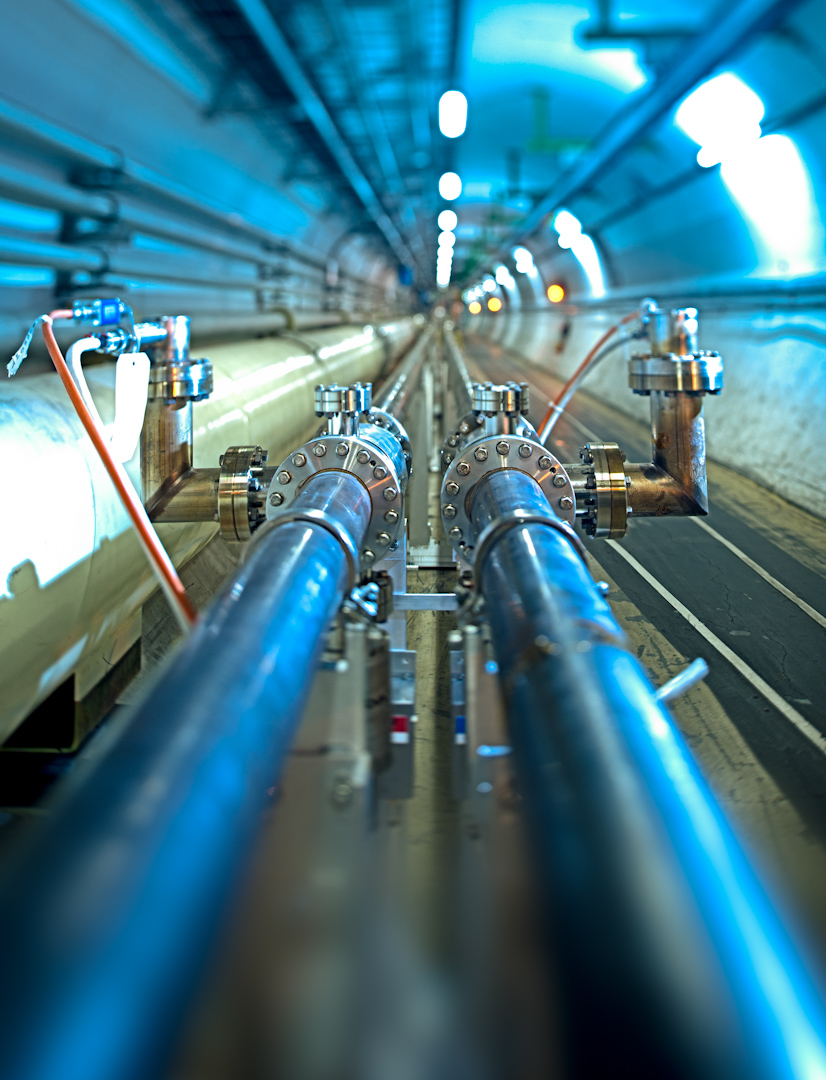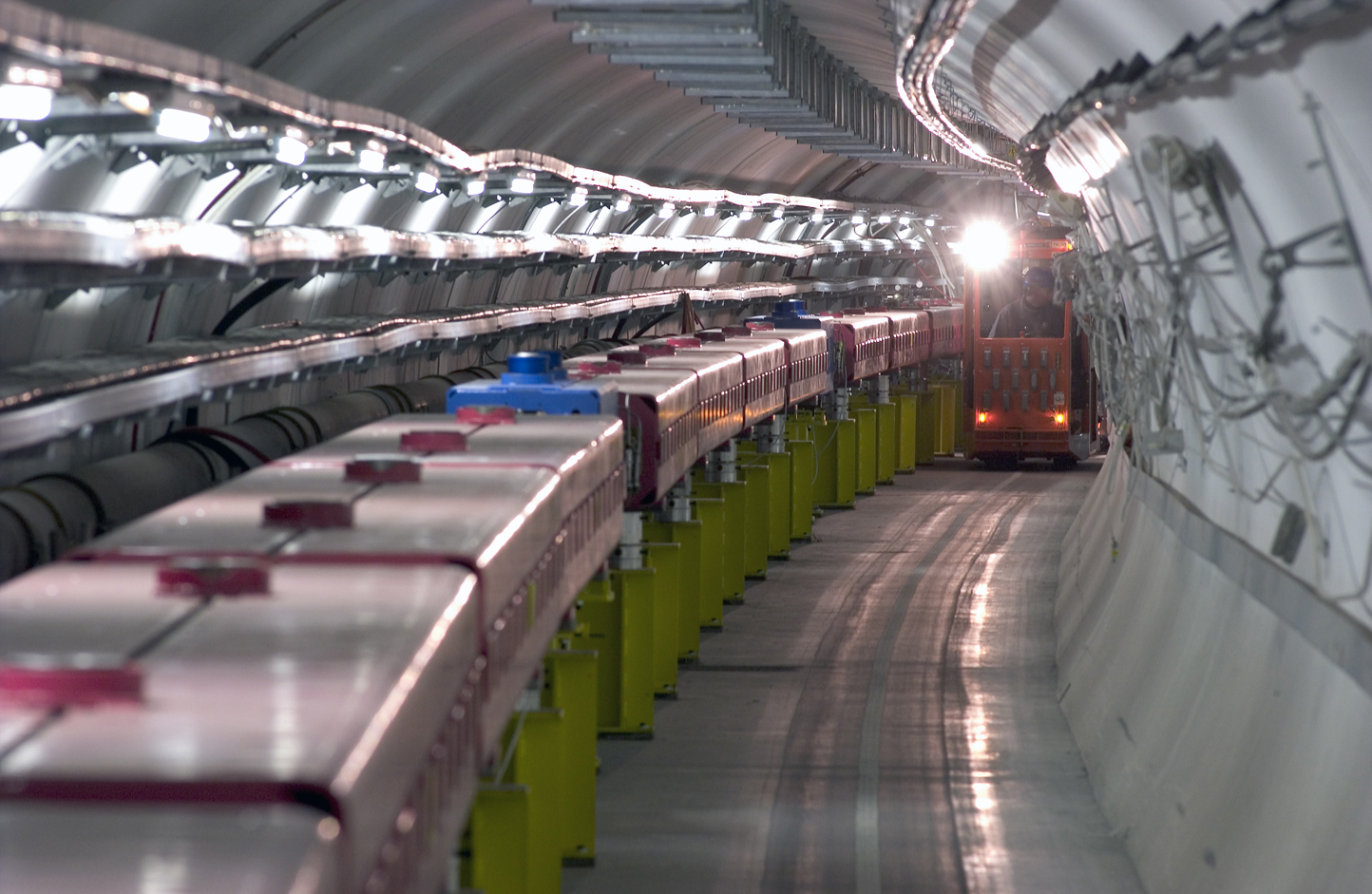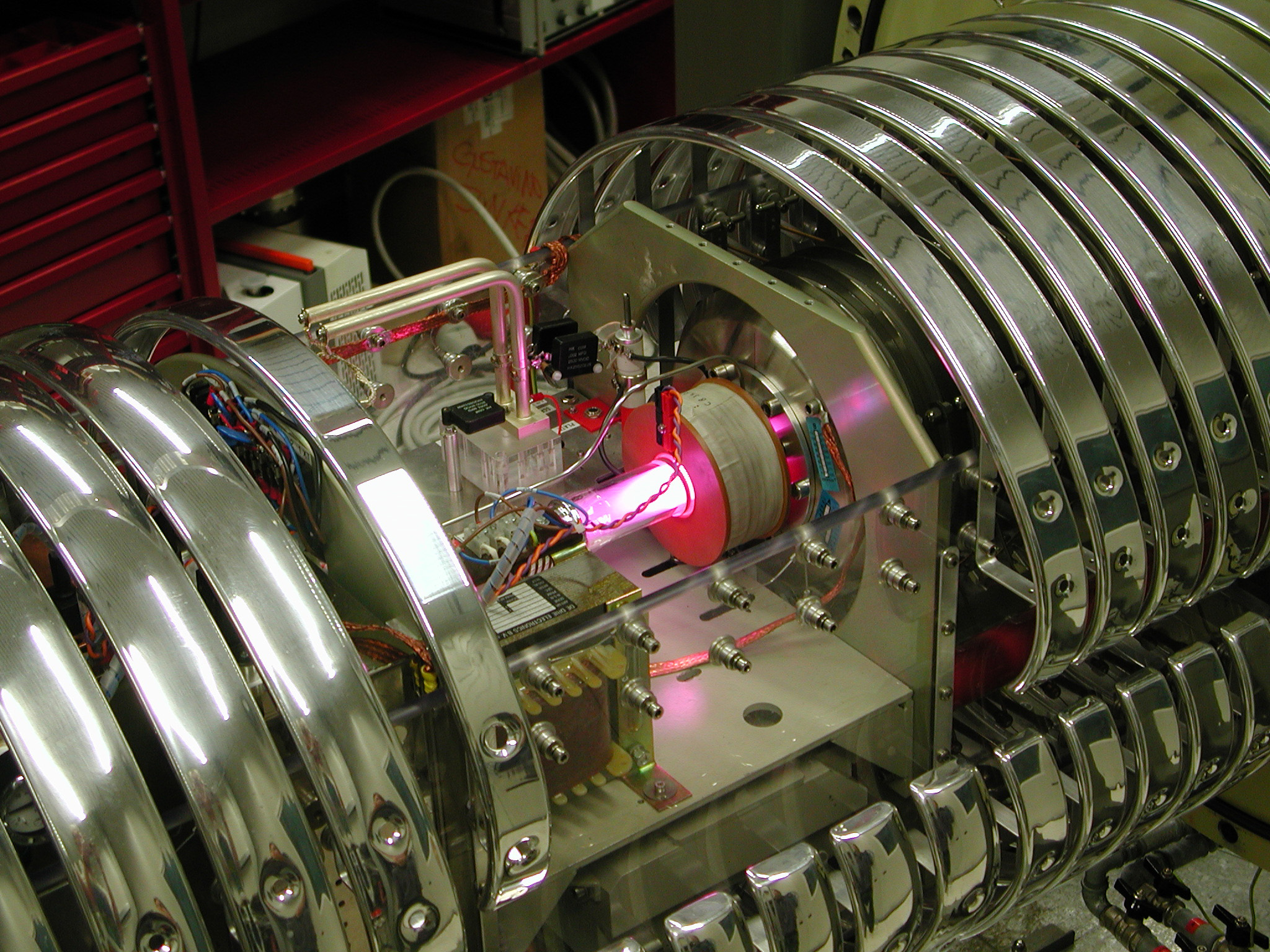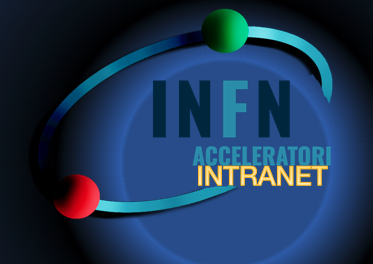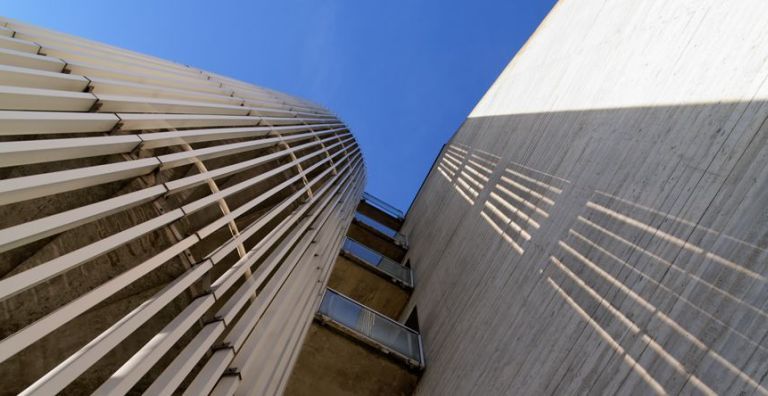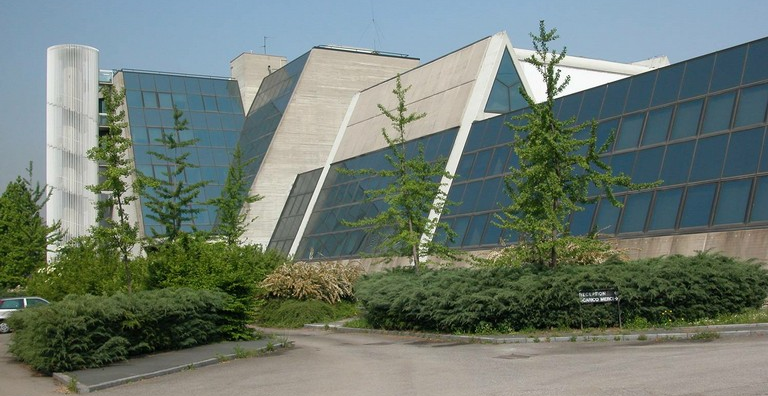Istituto Nazionale di Fisica Nucleare
Sezione di Milano
L.A.S.A.
Laboratorio Acceleratori e Superconduttività Applicata
Via Fratelli Cervi, 201 - 20090 Segrate (Milano) - Italy
Telefono +39.02.503.19500 - Fax +39.02.503.19543
The INFN laboratory LASA (short for Laboratorio Acceleratori e Superconduttività Applicata, i.e. Laboratory for Accelerators and Applied Superconductivity), is a center of excellence at an international level in the field of advanced technology for particle accelerators based in Segrate, near Milan.
The LASA develops advanced technologies for superconductivity, cryogenics and the productions of high intensity DC and RF electromagnetic fields. Here the first european superconducting cyclotron, and third ever realized worldwide, was designed, assembled and tested. The cyclotron is in operation since 1994 at the INFN National Laboratories of the South in Catania.
The main mission of LASA currently is the development of radiofrequency superconducting resonators for particle beam acceleration and superconducting magnets for particle beam orbit and focusing.
It is housed in premises of the University of Milan and the research is conducted in collaboration with university professors according to the INFN tradition.
Superconducting Magnets Group
Activities managers: Prof. Massimo Sorbi, Dr. Marco Statera
Instrumentation:
- Facilities for medium and high range tests (up to 15 T), with useful bore size up to 500 mm, at room or cryogenic temperature.
- Test station for critical current measurements in superconducting wires and cables, with variable external magnetic fields.
- Test station for the testing of superconducting magnets in LHe (up to lengths of 4 m), with connected instrumentation (cryostats, power supplies, diagnostic and protection systems). Test station for HTC variable temperature magnets is being prepared.
- Apparatus for field quality measurements in accelerator magnets.
- Apparatus for measuring the thermal conductivity of materials at cryogenic temperatures.
- Equipment for mechanical characterization of materials (tensile, compression and cyclic tests) at ambient or cryogenic temperatures, up to 200 kN.
- Instrumentation for winding, impregnating and thermally treating superconducting wires.
Skills:
- Design and test of superconducting magnets:
- Creation of prototypes and models of superconducting magnets
- Design and construction of test stations (cryogenic devices, data acquisition and diagnostics, power electronics).
Projects:
- Development of multipolar superconducting magnets for particle accelerators, up to engineering and mass production by industry (HiLumi LHC program)
- Development of high field dipolar superconducting magnets (12-14T) for post-LHC collider (FCC)
- Development of superconducting magnets for medical applications (synchrotron and gantry)
Giancarlo Maero and Massimiliano Rome ', (university students associated with the) Section of Milan
Projects:
- Radio-Frequency quadrupole cooler for studies on RIB beam cooling
- Dynamics and manipulation of non-neutral plasmas at low temperatures
- Instrumentation (main scientific apparatuses):
- Penning-Malmberg trap with 0.2T solenoid (1.5m length x 30cm diameter)
- Penning-Malmberg trap with 0.9T solenoid (70cm length x 10cm diameter)
- Cs Kimball ion source apparatus with pepperpot diagnostics;
- Continuum Surelite laser 1064 nm 960 mJ 10 Hz
- Continuum Minilite 355 nm 6mJ 15 Hz laser;
Skills:
- (Non-neutral) plasmas trapped in Penning-Malmberg machines
- Dynamics of low energy electron and positron beams
- Sources of electrons / positrons
LASA - Superconducting cavities and photocathodes (photoemissive materials):
Skills:
- Design, development, prototyping, testing, transfer to industry, quality control, industrial production of superconducting cavities in solid niobium.
- Design, design, construction of cryomodules for superconducting cavities.
- Design, design and implementation and testing of tuning systems for superconducting cavities.
- Design, design, construction and testing of ancillaries for superconducting cavity systems.
- Development of accessory instrumentation for superconducting cavity tests.
- Vacuum, ultra-vacuum, cryogenics, RF, etc.
- Surface treatments of niobium: cleaning and rinsing, BCP (Buffered Chemical Polishing), EP (electro-polishing), vacuum heat treatments, etc.
- Development and deposition of high quantum efficiency photoemissive materials, used for the generation of electrons in high brightness sources.
- Vacuum characterization of the photoemissive and optical properties of thin films
Main projects in which we have been involved in recent years:
- European XFEL: 400 cavities 1.3 GHz + cryomodules.
- European XFEL: 20 cavities 3.9 GHz + related cryomodules and tuning system. All tests were carried out at LASA
- European Spallation Source, ESS: 38 solid niobium cavities, 6 cells, medium beta at 704 MHz.
- PIP II: various single-cell cavities and 2 multi-cell cavities at 804 MHz.
- FLASH and PITZ (DESY), APEX (LBNL), FA
- ST (FNAL), LCLSII (SLAC): supply of photocathodes and systems for their handling in Ultra High Vacuum (UHV) conditions
Equipment available:
- Manual helium liquefier, production 40 l / h LHe, with storage of 4000 l LHe, gas recovery system, gas purification and analysis, high pressure gas storage, etc.
- Apparatus dedicated to both superconducting cavity tests and superconducting magnets.
- Measurement system for superconducting cavities at frequencies between 500 and 800 MHz (650 W),
- 3 GHz (300 W) and 3.9 GHz (200 W), complete with all the accessory equipment for power tests (PLL, network analyzer, power meter, directional coupler, etc).
- Field Flattness tuning and measurement system for 700/800 MHz cavities.
- Field Flattness tuning and measurement system for 3.9 GHz cavities.
- Shielded bunker for superconducting cavity tests, with dose measurement system and X-ray spectrometry.
- Cryostat with passive shielding of the earth's magnetic field, 700 mm diameter, 4 m length, operating in superfluid helium.
- Vacuum system for superfluid helium sub-cooling for cavity testing.
- Cold insert with diagnostics for cryogenic tests for cavities at 700/800 MHz, 1.3 Ghz and 3.9 GHz with specific diagnostics (second sound, photodiodes, temperature measurement, fast thermometry, etc)
- Clean room ISO4, 9 m2, with services such as "slow pumping slow venting", High pressure rinsing, ultrapure water, vacuum systems etc. for manipulation and treatment of superconducting cavities.
- Accessory systems for superconducting cavity tests: ultra pure "electronic grade" water production system for cavity washing, particle counter systems, portable clean room, etc.
- Coherent light sources CW (He-Ne and Ar +), pulsed (Nd: YAG and Nd: Glass) with harmonic generators up to the 5th.
- Non-coherent light sources (Hg, LDLS, Deuterium, Xenon)
- Power and energy meters, spectrometer (180 nm -2000 nm), monochromator.
- Dedicated Ultra High Vacuum (UHV) deposition systems of thin films on metal substrates
- Time-of-flight spectrometer for angle-resolved measurement of the energy spectrum of low-energy electrons (<5 eV)
- Keyence digital microscope and Leica optical microscope
LASA - "Room temperature" type linear particle accelerators
Dario Giove - Alberto Fazzi (PoliMi)
Projects:
- Development of a compact 3 GHz LINAC BOOSTER for protons coupled to a 60 MeV cyclotron (LIBO project - collaboration INFN-CERN-Fondazione TERA)
- Development of a compact 3 GHz LINAC BOOSTER for protons coupled to a 30 MeV cyclotron (PALME project - INFN and University of Milan and Naples)
- Development of a prototype of a traveling wave RF cavity to be used as a compressor for high-brightness electron beams (CORA - INFN project)
Instrumentation:
- Spectrum Analyzer Rhode Schwarz 9 KHz-40 GHz
- Network Analyzer Rhode Schwarz 10 MHz-20 GHz
- RF Generator Rhode Schwarz 9 KHz-3.3 GHz
- Beed pulling system for RF field measurement
- Anritsu MF2412B Power Meter
- Thermostating stations for cavities with 0.1 ° C stability
- 4 MW 3GHz power load
- 2856 MHz continuous 20 Watt RF generator
Skills:
- Design of standing wave and traveling wave copper cavities at 3 GHz and in X band
- Design of cooling systems
- Design of timing systems
- Design and operation of RF power systems
- Design of diagnostic systems
LASA - Laser-driven linear particle accelerators for proton beams
Dario Giove - Alberto Fazzi (PoliMi)
Projects:
- Extraction of the first laser-accelerated proton beam taken in the lab. FLAME of Frascati
- Generation, extraction and guidance of accelerated proton beams up to 12 MeV at the ILIL laboratory of the CNR in Pisa (project L3IA)
- Study of the problems related to the diagnostics of laser accelerated particles (LILIA and ELIMED projects)
Instrumentation:
- Optical bench and aiming laser
- Tektronix 40 Gs / sec and 3.5 GHz 4-channel band oscilloscope
- Solid state and scintillation detectors
- Multichannel spectroscopy system
- Cross correlator 3rd order Sequoia from Amplitude
- Computerized 3-axis station for target handling with sub-micron resolution
- MCP detectors of various diameters
- Bench characterization systems for solid state detectors
- Solid state detector characterization systems with multi-energy sources
Skills:
- Study and realization of specific plates and laser-plate interaction schemes for the production of proton beams and light particles
- Simulation, design and implementation of magnetic systems dedicated to the transport of proton / energy ion beams up to 30 MeV generated by laser-target interaction.
- Development and realization of various types of detectors for the characterization of proton and light ion beams up to 30 MeV

